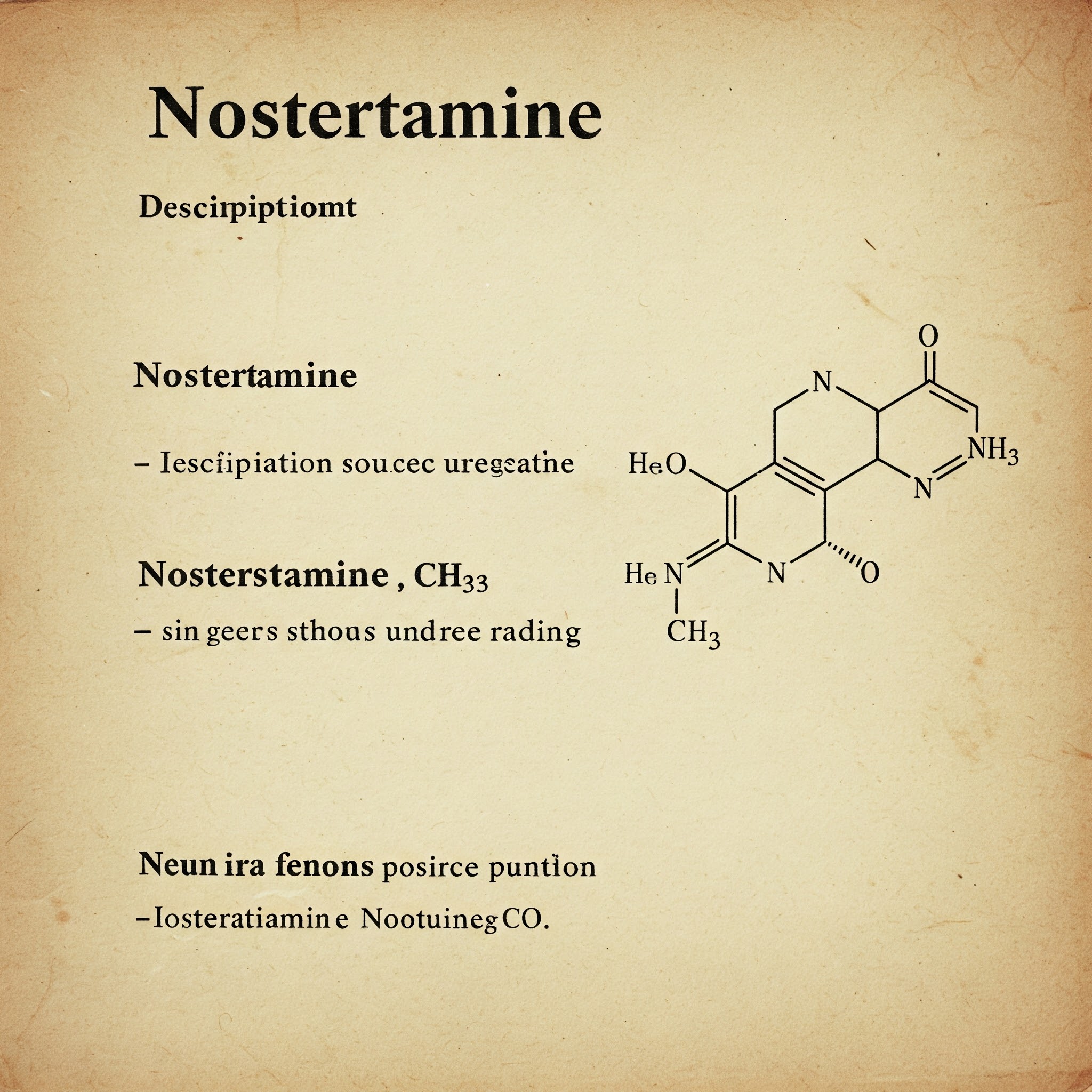Unlocking the Potential of Nostertamine: A Breakthrough in Neurological Therapeutics
In the ever-evolving field of neuroscience and pharmacology, new discoveries often spark hope for treating complex conditions. One such emerging compound, nostertamine, has recently captured the attention of researchers and healthcare professionals alike. Though still in its experimental stages, nostertamine promises to revolutionize how we approach neurological disorders, from depression to neurodegenerative diseases.
What Is Nostertamine?
Nostertamine is a novel synthetic compound classified as a selective neuromodulator. Early studies suggest it interacts with serotonin and glutamate receptors in the brain, two neurotransmitter systems critical for mood regulation, cognition, and memory. Unlike traditional antidepressants or antipsychotics, nosterta mine appears to enhance synaptic plasticity—the brain’s ability to adapt and rewire—without the common side effects of weight gain or sedation.
Key Characteristics
- Chemical Structure: A hybrid molecule combining elements of tryptamine (found in serotonin) and a synthetic glutamate analogue.
- Mechanism of Action: Targets both 5-HT1A serotonin receptors and NMDA glutamate receptors, promoting balanced neurotransmitter activity.
- Current Status: Undergoing Phase II clinical trials for major depressive disorder (MDD) and Alzheimer’s disease.
The Science Behind Nostertamine
To understand why nostertamine is groundbreaking, let’s break down its dual-action mechanism:
1. Serotonin Modulation
By binding to 5-HT1A receptors, nostertamine boosts serotonin signaling—a pathway linked to mood stabilization and anxiety reduction. Unlike SSRIs (e.g., Prozac), which block serotonin reuptake, nostertamine enhances receptor sensitivity, offering faster relief in preclinical models.
2. Glutamate Regulation
Glutamate, the brain’s primary excitatory neurotransmitter, plays a role in learning and memory. Nostertamine’s interaction with NMDA receptors helps prevent glutamate toxicity (associated with Alzheimer’s) while strengthening synaptic connections. This dual effect could address both mood disorders and cognitive decline.
Potential Applications of Nostertamine
While research is ongoing, here’s where nostertamine shows promise:
1. Treatment-Resistant Depression
Approximately 30% of depression patients don’t respond to SSRIs. Early trials indicate nostertamine alleviates symptoms in these cases within weeks, not months.
2. Alzheimer’s Disease
By protecting neurons from amyloid-beta plaque damage and improving memory recall in animal models, nostertamine could slow disease progression.
3. Anxiety and PTSD
Preliminary data suggests it reduces hyperarousal and intrusive thoughts by calming overactive glutamate pathways.
4. Cognitive Enhancement
Healthy volunteers in Phase I trials reported improved focus and problem-solving skills, hinting at nootropic potential.
Benefits Over Existing Treatments
- Fewer Side Effects: No significant weight gain, sexual dysfunction, or drowsiness observed.
- Rapid Onset: Antidepressant effects noted in 2–3 weeks vs. 6–8 weeks for SSRIs.
- Neuroprotective Qualities: May repair, not just manage, neurological damage.
Challenges and Controversies
Despite its promise, nostertamine faces hurdles:
- Long-Term Safety: Unknown effects of prolonged NMDA receptor modulation.
- Cost and Accessibility: As a patented drug, affordability could be a barrier.
- Ethical Concerns: Cognitive enhancement uses might raise “brain doping” debates.
The Future of Nostertamine
Research Timeline
- 2024–2025: Phase III trials for depression and Alzheimer’s.
- 2026: Potential FDA approval for MDD.
- 2030: Exploration of applications in ADHD and traumatic brain injury (TBI).
What’s Next?
- Combination Therapies: Pairing nosterta mine with lifestyle interventions or other drugs.
- Personalized Medicine: Genetic testing to identify ideal candidates for treatment.
Conclusion
Nostertamine represents a bold leap forward in neuropharmacology, blending serotonin and glutamate modulation to tackle some of medicine’s most stubborn challenges. While questions remain, its potential to improve millions of lives is undeniable. As research unfolds, this compound could redefine our approach to mental health and cognitive longevity.
FAQs About Nostertamine
1. Is nostertamine safe for long-term use?
While early trials show minimal short-term side effects, long-term studies are ongoing. Researchers are cautiously optimistic but emphasize monitoring.
2. How does nostertamine differ from ketamine, another glutamate-targeting drug?
Unlike ketamine, which temporarily blocks NMDA receptors, nosterta mine modulates them without dissociation or addiction risks.
3. When will nosterta mine be available to the public?
If Phase III trials succeed, it could reach markets by 2027 for specific conditions like treatment-resistant depression.
Read Also –







